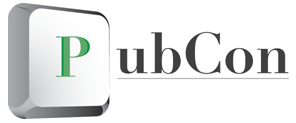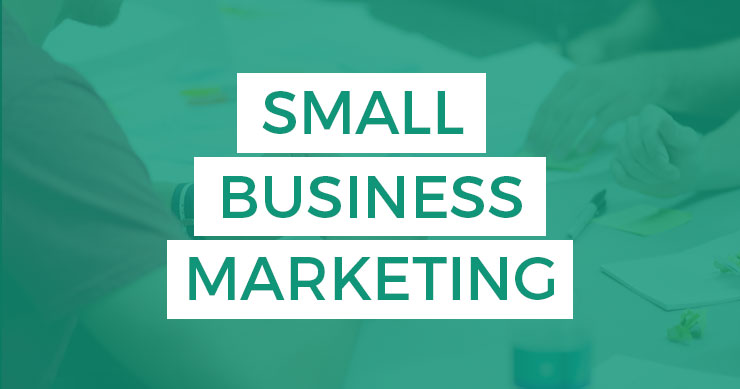 Hello from beautiful, windy Austin, Texas! They don’t call this tornado alley for nothing. But if you ask me, this is the ideal spot for PubCon. If you’re here and you haven’t been to Rudy’s BBQ yet, you’re missing out. You don’t want to leave the state without getting a belly full of their brisket. Trust me—I’m from Texas. If there’s one thing we Texans take seriously, it’s our BBQ. And our conferences! Like that segue, did you? Well then let’s get to it.
Hello from beautiful, windy Austin, Texas! They don’t call this tornado alley for nothing. But if you ask me, this is the ideal spot for PubCon. If you’re here and you haven’t been to Rudy’s BBQ yet, you’re missing out. You don’t want to leave the state without getting a belly full of their brisket. Trust me—I’m from Texas. If there’s one thing we Texans take seriously, it’s our BBQ. And our conferences! Like that segue, did you? Well then let’s get to it.
Keynote
We kicked things off with a Wizard of Oz-themed keynote from Jeffrey Eisenberg titled “Social Media and Conversion: The Yellow Brick Road.” I was okay until the slide with the creepy flying monkey. They still freak me out. Anyway, if you think you’re using social media correctly and to its full potential, think again.
According to Jeffrey, social media is a big thing, and not just among geeks like us. Approximately 70 percent of Americans check their social media statues more than twice a week. That’s an indication of a habit, and it’s not going away.
So what can you use social media for? Well, everyone knows it’s for marketing, right? Boy, are you lucky there’s not a quiz at the end of this post. No, Jeffrey says we’re all using social media incorrectly. In fact, we’re just being downright rude because we’re constantly using social media to ask people to do things for us like subscribe, register, like, follow, share, and all those other things we try to get people to do every day with our tweets and status updates.
We have to step back and realize what we do is unwelcome, and find ways to make it more palatable. This isn’t to say we shouldn’t use social media to support and encourage buying, but there are better ways to do it. People give money to people they like.
The takeaway: “Sales is not a numbers game; it’s about performance. Excellence in social media doesn’t come from how many millions of people you talk to; it’s from relationships you build. They help with conversions, but don’t create conversions.”
In-House SEO
Next up was a really helpful session on In-House SEO, presented by Elmer Boutin and Peter Leshaw. Topher Kohan was unable to make it to PubCon, but not to worry. Moderator Carolyn Shelby was fully prepared to step in, offering the audience a choice of three in-house SEO presentations.
First Elmer talked about the sometimes strained relationship between in-house marketers and the company’s IT department. A lot of it stems from unclear roles, especially as they relate to “ownership” of the company Web site. It also seems a lot of IT people are frustrated because they feel marketers don’t understand the technology used by the organization.
Elmer suggests thinking of the IT department as your customer, rather than you being their customer. Someone on the marketing side needs to speak geek and build a relationship with an IT person who can speak marketing. The key is communication.
Peter was up next, and basically gave his recipe for a successful in-house SEO team, which involves the use of several tools, some outsourcing, and the creation of a customized dashboard. Peter says that creating a dashboard that tracks and reports metrics relevant to ROI from each online marketing channel can help you get corporate on your side. That will especially come in handy when you need someone to sign off on a budget, or approve a purchase for marketing tools.
Carolyn’s own experience as an in-house SEO came into play, and her very first suggestion was that SEO should be baked into sites, not done as an afterthought. She reiterated that one problem that affects in-house SEO efforts is the tug of war over site control. You all play for the same team—act like it!
When trying to get corporate support, Carolyn says to pretend everyone is Missouri—the show-me state. You need to be able to show physical proof of results you’re getting. Without it, you don’t have much credibility. But don’t allow yourself to be bullied, either. If you know something needs to be done, fight for it.
How to Start a Successful Affiliate Program
Switching tracks, How to Start a Successful Affiliate Program was next on the agenda. Chuck Hamrick moderated, and offered a lot of great info, while Adam Riemer, Peter Hamilton, Paul Schroader, and Brook Schaaf all shared their ideas and opinions on how to start an affiliate program, and what makes it successful.
The main thing everyone agreed on is that if you don’t have affiliate program, you’re leaving money on the table. An affiliate program extends your online marketing reach, and you’re only paying for sales or leads. Display is free. All the messaging about your brand is free. Even when cookie expires, you have a free customer coming in the door.
Brook said that Zappos can attribute much of its success to its affiliate program, which helped the company grow at a phenomenal rate right out of the gate.
Chuck recommended that before you start an affiliate program, you must do research. Know your metrics, know the reasons you’re doing it, and know your marketing budget.
Adam’s question was whether you have a marketing budget set aside. This is very important. If the program takes off, you have to be able to continue building it. If you have to scale it back, or worse, stop it, even temporarily, you run the risk of angering your affiliates.
Paul cringes at the thought of an affiliate program being tied to a budget at all. It’s a self-funding project, and you must approach it that way. He suggests not locking yourself into a budget.
Once you decide to start an affiliate program, you need affiliates. To find them, Peter suggests launching a PPC campaign. Potential affiliates sometimes search for brand names with “affiliate program” to see what’s out there. The campaign would be super cheap because there’s not much competition, and you’re only paying for a click.
With the popularity of sites like Groupon, coupons are a big deal online right now. Chuck suggests making sure you’re comfortable using them. Also remember that if you’re offering something at a higher price point, people will look for a coupon, and if you don’t have one but your competitor does, you’re going to lose a sale.
Everyone agreed that communicating with your affiliates is important, but don’t stalk them. Also make sure your rules are clearly spelled out in your terms and conditions. Probably the best recommendation, though, was before you take on affiliates, be an affiliate for a while yourself so you know what it’s like, and how best to serve your own affiliates. But Adam reminds you not to compete with your affiliates if you do this!
Brand and Reputation Management
Switching gears again brings us to Brand and Reputation Management with Tony Wright, David Wallace, Kenny Hyder, and moderator Robert Riggs.
David was up first, explaining that social media profiles can become an extension of your company’s site. They offer benefits such as the abilities to secure your brand, attract traffic from the social media community, network, and help control organic SERPs for your brands. Why should you worry about organic SERPs? Because negative listings suck.
Setting up social media profiles can be tedious because it’s all manual, but you can automate some of it with a text file from which you copy and paste. Still not ideal, but better than fat fingering it. To get your social media profiles indexed:
- Add links to your profile urls in the “about us” page of your site
- Use paid blog reviews to link to social media profiles
- Include links to social media profiles in press releases
- Link to other social media profiles
Tony then went into how there are hundreds of tools out there to help you monitor your online reputation, some free, some expensive. But there is no tool that will allow you to monitor reviews in Google. This must be done manually because Google actually blocks these types of tools from accessing their data. But monitoring SERPs can be done through tools like Raven.
When someone says something negative about you online, before you freak out and respond, consider a few things. How big is the blog or site where the comment appears? How big is the audience? Most importantly, what effect, if any, is the comment actually having on your business? By responding in the blogger’s own space, you’re validating their comment, and possibly turning even more attention to it than it would have gotten had you kept quiet.
Kenny, who, it turns out, is quite the troublemaker (waves at Kenny!), talked about the Charlie Sheen phenomenon currently taking place not only online, but all over the media. He compared the public’s reactions to Sheen to the reactions Tiger Woods got when his shenanigans came to light. Hmm…Tiger Woods…tiger blood…is there a connection?
Anyway, the reason people aren’t disappointed in Charlie Sheen is because first of all, they’re not surprised. He’s been a train wreck waiting to happen for years. But more than that, he’s never hidden who he is. Sheen’s attitude is pretty much this is who I am, this is what I do, I don’t care if you like it.
Woods, on the other hand, hid his true self from the world for quite a while, so when everything came out (as it always does—don’t fool yourself), he wasn’t just a philanderer, he is now branded a liar. People will never look at him the same way.
The lesson for your business is, always be your true self. Always be honest. Kenny shared a quote: “The truth may hurt for a little while, but a lie hurts forever.” He recommends you have a crisis management plan in place, even before something happens. That’s also where Tiger Woods screwed up. Don’t wait until the damage is done. Be proactive in your reputation management.
Link Building 2011 – Hot Topics
Which brings us to the last session of the day, Link Building 2011 – Hot Topics with Jay Young, Ben Cook, Michael Gray, Todd Malicoat, moderated by Kate Morris. I will admit I was a bit disappointed that rather than give their prepared presentations and take questions afterward, the panel decided to make the entire thing a Q & A session. This isn’t necessarily a bad thing. Some people basically got some free consulting out of it. But I would have liked to know what the panel thought were the hot topics. Maybe they’ll go home and blog their presentations? (Hint! Hint!)
I’ll share a few of the questions with you. Ok, fine. And the answers, too.
Buying links—is it bad, or just paid advertising?
Michael Gray: Google doesn’t like you buying links. Be smart about it. Don’t buy them all at once. Mix anchor text. Don’t focus it all on one page. Make it look as natural as possible.
Ben Cook: Link to internal pages rather than the home page.
What white hat methods should I be using?
MG: Guest posting is good. Give away content, like a post, a social piece, or a top ten piece. Those will translate into stronger links for you. Try to get a deal with a site to post every month or so, if you can.
Are article submission sites still going to work as a link building strategy with the farmer update?
Todd Malicoat: Every method still works. It’s more difficult to get just the “ask for” links because webmasters are fickle. Guest posts are more effective.
MG: No, [article submission sites are] not as effective as in the past.
TM: Have a balance between buying, guest posts, and reciprocal links.
MG: The only thing I do with article submission sites is ORM.
BC: Depends on what competitors are doing. If everyone’s doing it, it might still work. Keep an eye on what Google wants to happen.
Jay Young: Testing is important, and so is analysis. Compare what you and your competitors are doing. Some companies provide those [analytical] services. SEOmoz, Raven, Majestic all look at things like acquisition of links over time.
Suggestion from Kate: Use Open Site Explorer because Yahoo! Site Explorer is slowly dying.
What do you do to build links when starting on a new site?
JY: I have a team of people sit in room and look for best relevant sites that relate to the sites we want to link to. We contact them via e-mail, and ask them for links.
MG: Social media isn’t as effective as guest posts. Try Blogger Linkup. It’s like HARO but for bloggers.
TM: Outsource to companies that will be effective and not get you in trouble, and will do link building the right way, with a little bit of everything.
When you use link-buying services, how do you know if it’s black hat?
MG: If you’re buying links, it’s black hat. If you’re not comfortable with that, sponsor events that will get you valid links.
BC: No one up here is going to say they’re completely clean. There’s always something offered in exchange for the link. Just do it in a way that offers value. If it’s something you feel you don’t want your name tied to, then don’t do it.
Whew! And these were only the sessions I attended! That’s the only downside I’ve found to PubCon—so many great sessions happening all at once, and having to choose which ones to sit in on. Stay tuned for continued liveblogging coverage from SMX by liveblogger extraordinaire, Lisa Barone, and come back tomorrow for another PubCon summary. See you then!


